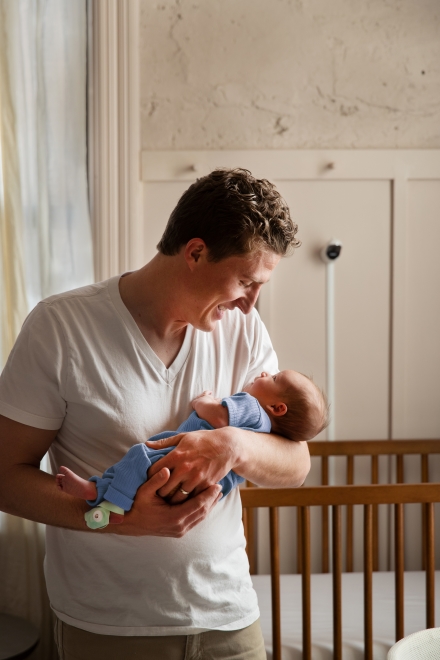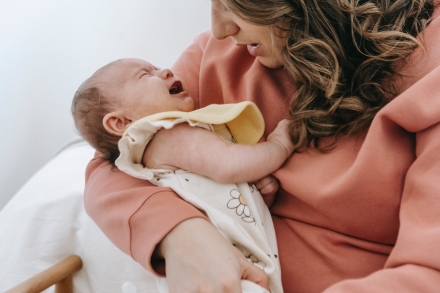Learning to fall asleep independently
At this point in your baby’s development you can focus on teaching your baby the skill of falling asleep independently. Some babies learn this very easily, while others need lots of support from their caregivers and extra practice during this process.
Sleep anticipations
Put baby down for bed drowsy but awake
Some babies learn to go to sleep independently very easily, while others need lots of support from their caregivers and extra practice during this process. However, this doesn’t mean you should start sleep training or sleep learning methods at this age, since your baby is much too young for such practices. Instead, you can work on teaching your baby to fall asleep independently: practice a consistent sleep time routine that ends with putting your baby in their crib or bassinet drowsy but awake. This practice, with your support, teaches your baby that you are there to soothe when necessary, but that the goal is for them to learn it’s ok to be alone in their crib for sleep.

Example bedtime routine
- Go into your baby’s room and close darkening curtains or shades
- Change your baby’s diaper and dress them in pajamas
- Sing a short song or read short book
- Feed your baby: breastfeed or give bottle as a normal feeding
- Burp your baby
- Swaddle your baby in swaddle blanket or sleep sack; when possible allow your baby to have access to their hands for self-soothing
- Turn on a white noise machine
- If your baby is calm and looks sleepy, place them in their crib; offer pacifier if needed
- If your baby is not calm or is fussing, spend a few minutes rocking or swaying them while patting and shushing, then place your baby in their crib; offer pacifier if needed
- Back away from your baby’s crib and wait
- If several minutes pass and your baby begins to fuss:
- Go to their crib, place your hand on your baby, and gently “rock” them with your hand
- If your baby is still fussing after this attempt, try to replace pacifier and begin shushing to add in some additional white noise
The goal here is to provide little bits of support and soothing to your baby to assist their ability to fall asleep independently. The more intervention that’s needed means your baby needs more time to practice. As they learn this new skill, they’ll require less intervention from you, with the ultimate goal of putting your baby down drowsy but awake so they can fall asleep independently without crying. Fussing is not the same as crying, so if your baby is vocalizing and making grunts or moans, try not to intervene. This is your baby’s way of working through this skill of self-soothing and becoming calm enough to fall asleep.

It’s OK to pick Baby up!
If your baby is crying, by all means pick them up and provide comfort and soothing. Once Baby is calm, put them back down in their crib. Continue to go through the above steps for soothing. If your baby still cannot seem to calm and settle with another round of your soothing support, consider offering another feeding, as it may have been 1 hour since their last feeding. The more you consistently stick with this type of bedtime routine the closer your baby will get to learning and mastering the skill of falling asleep independently.
